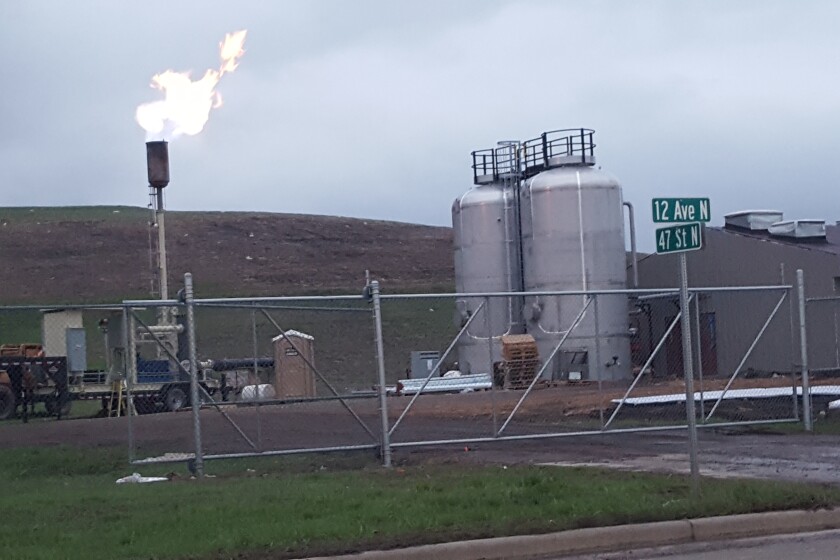FARGO — City Administrator Bruce Grubb, who put together a lengthy report on the climate resiliency efforts Fargo has undertaken dating back 30 years, told Fargo City Commissioners on Friday, Nov. 13, he plans to reenergize a committee to help continue the work.
The 10-page "white paper" highlights the city's major and minor achievements, as well as a few that didn't work out, as commissioners asked what can be done to continue to reduce the city's carbon footprint while saving taxpayer money.
The presentation followed a climate action town hall called by Commissioner John Strand about a year ago that attracted more than 40 ideas and comments from residents.
Strand asked Grubb on Friday to identify the city's most pressing climate challenges.
ADVERTISEMENT
Grubb said the Fargo-Moorhead Diversion project and the Red River Valley Water Supply project that will provide protection for floods and droughts have moved further along in the past few months than he has seen in his 31 years working for the city.
When those projects are complete, they will be the most major climate resiliency efforts that could be done for the city, he said in his report.
He also said the revived city energy efficiency and conservation committee could come up with future projects. The city plans to assemble the panel in the coming months with residents invited to join city staff, local energy consultants and representatives of Xcel Energy and Cass County Electric Cooperative, he said.
A website feature to give residents a chance to offer more ideas will be offered in the near future.
Also in his report, Grubb detailed what's ahead in the coming year:
- Replacing fluorescent lamps with new LED lighting at two library locations.
- Installing an electric vehicle charging station in the west parking lot at City Hall and buying a fire truck with 90% fewer exhaust pollutants with financing from a Volkswagen settlement.
- Installing the latest in energy efficiency features in the wastewater treatment plant expansion, as was done at the water treatment plant expansion and the new City Hall.
- Continuing traffic signal and street light conversions to energy-saving LED bulbs that have 10-year life compared to two years for previous bulbs.
- Continuing the city facilities department study to look at more savings in municipal buildings by working with Xcel and Cass County Electric.
- Finding a use for natural gas or connecting to current lines at the landfill as workers complete a project converting a portion of its methane gas to natural gas. Grubb said they originally thought about using the natural gas in vehicles, but he said the truck and vehicle industry is moving toward electricity.
Grubb pointed to numerous other efforts that have been undertaken, from using about 3.8 billion gallons of treated wastewater to produce ethanol to more simplified efforts, such as collecting rainwater at the water treatment plant and Metro Transit garage to irrigate adjacent grounds.
The big pollution reducer, he said, has been the landfill gas and reuse program, thought to be the only one in North Dakota, that started in 2001.
ADVERTISEMENT
Each year, the system reduces carbon dioxide emissions by 147,500 metric tons —equivalent to the electrical use of 28,500 homes. The gas is used to heat landfill buildings and produce electricity sold to the local power grid.
"This is a major reduction in greenhouse gases," he said.
The city's recycling effort, with about 80% compliance, adds to the city's greenhouse gas or carbon footprint reduction with 7,800 tons collected last year. That translates into 24,140 metric tons less of carbon dioxide emissions or the equivalent use of electricity at 3,200 residential homes.
The diesel-electric propulsion systems in city buses also reduced particulate emissions by 90%.
A few of the projects that didn't turn out, he said, were a community wind turbine project at the landfill and an effort to use Microsoft's biodegradable paper and utensil products from their cafeteria in the yard waste composting. The decomposition was too slow for use.









